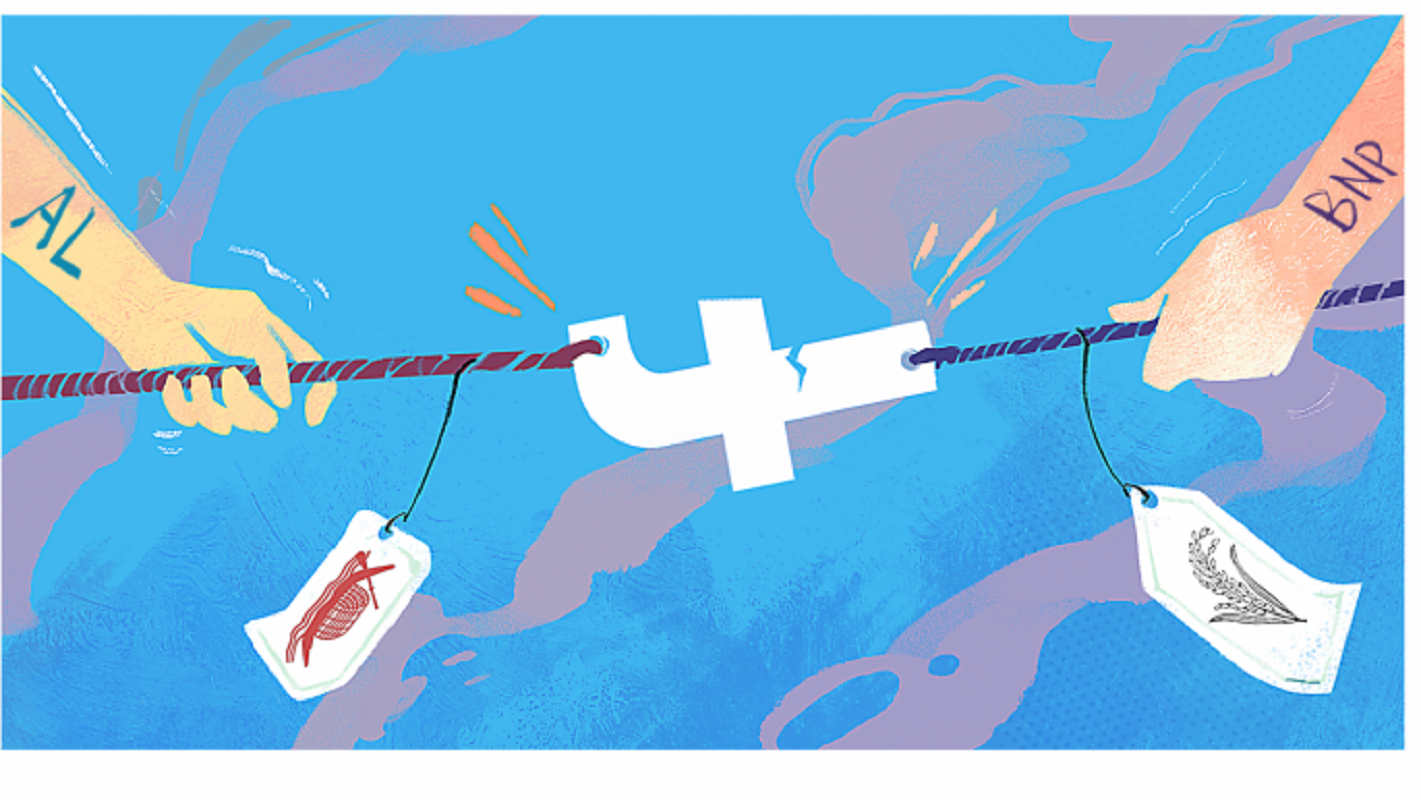The Culture War of Bangladesh: A Post-Uprising Analysis
Kazi Rhid | 15 August 2024
For the last decade and a half, Awami League (AL) had single-handedly strangled the cultural narrative of the country. The liberals of the country welcomed it because they were scared of the slender man myth. The hardliner conservatives would take away their right to make art and express themselves. That was what they were afraid of. Though the space for expression was shrinking overall, the liberal minority that was in line with the AL government’s political ideologies and beliefs stayed in their own bubble and made whatever they wanted to, regardless of the crackdown on different political beliefs and the art surrounding it. A perfect example of this is cartoonist Mushtaq being jailed and dying there for his different beliefs.
This shrinking of civic space was bubbling up in other ways. People were still feeling these things but were unable to express them, creating a simmering sensation in the community. The amalgamation of this was seen as calligraphy in Arabic started to pop up across the streets as soon as the regime fell. This conservative outburst of art and literature was sharply scrutinised as soon as they popped up around the Shaheed Minar. Since the Shaheed Minar stands as a representation of the Bengali Language movement in 1952, many saw this negatively and put a stop to it, which was again criticised by the conservative side.
This is just one instance of the two sides colliding. The major thing that started happening as soon the government fell was the start of breaking down statues and sculptures, many of which were of Bangabandhu Sheikh Mujibur Rahman, who many people regard as the father of the nation, but that too is being disputed out of the criticism of his administrative decisions post-liberation. Sheikh Mujib is also the father of Sheikh Hasina, and many attribute the breaking down of his statues to being a symbol of anger towards Sheikh Hasina. However, it does not take away from the fact that many other sculptures around the country have been broken down. The historic Shoshi Lodge Venus sculpture in Mymensing and the statue of the Shaotal indigenous community in Dinajpur are some examples. These had nothing to do with the past 16 years of oppressive, undemocratic regime, but it shows a dissatisfaction towards the sculpture culture overall. At the same time, the conservatives see themselves under attack when they see the removal of Arabic calligraphies. They think it’s an intervention in their freedom of expression.
The Indian right-wing media immediately started capitalising on this divide. They are focused on the attacks on the Hindu community, showing that it is an all-encompassing crisis. The reality of the situation is that the majority of the different religious communities have a bias towards the AL. Many of them are active supporters and members of the community. So, the attacks are not necessarily based on their religious identity. Instead, it is an attack on their political beliefs. It is not right either way, but given the circumstances and the historical political context of Bangladesh, these sorts of attacks have precedents.
Whenever the regime changes, the new political alliance in power gets revenge on the one that was previously in power. The question that should be more important is why the Hindu community overwhelmingly supports one political party and not the other. Is it coercive action, or do they believe in the party’s mandate? This reason needs to be looked at closely. What can be done to stop the culture of vengeful instincts of political parties in transition?
The main opposition has already taken steps to address this issue. They have expelled many party members because they took advantage of the lawlessness. This is a positive move and should be appreciated. One other instance is the far-right conservatives have taken the steps to protect Hindu and other minority religious temples the night of the first attacks. The distrust in the Indian media has gotten to an all-time high because they are still trying to spin the narrative of minority attacks with previous footage and not doing their due diligence when reporting. This has resulted in Muslim communities being attacked across India and being called Bangladeshi as an insult. The insecurity the minority Hindus are feeling in Bangladesh is being felt by the Muslims in India as well. The circle of violence and vengeance is only expanding because of this unprofessional fear-mongering “reporting” by the Indian media.
It doesn’t take away from the fact that there is a clear divide among the people of Bangladesh in terms of culture and how they want to represent themselves. There is no band-aid solution to this problem. There is a culture war all over the globe. Living in complete harmony might be a utopian thought, but there needs to be an attempt at the very least. Some beliefs of respect will always be disrespectful to someone else. We can only hope that this direct confrontation between different groups is only the residue of a destabilised administration of the post-uprising era. As the new government takes its course, the politics is not yet stable, and any uprising and its effects need time to simmer down. We can only hope that people remain patient during these trying times instead of grouping up as mobs.
Kazi Rhid,Content Strategy Coordinator, Centre for Governance Studies (CGS).
Views in this article are author’s own and do not necessarily reflect CGS policy.
